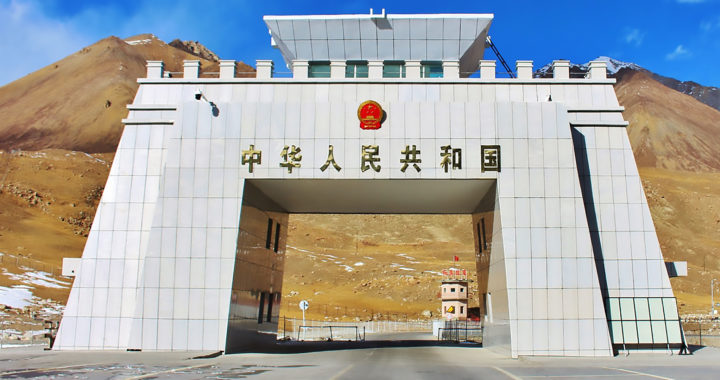China and Pakistan first signed the China-Pakistan Economic Corridor or CPEC agreement in 2015 and began formalizing its operation in 2016. The CPEC is an ongoing economic corridor undertaking that aims to connect the two countries through the development and operation of a network of sea-based and land-based transportation infrastructures spanning 3000 km in length. It will pass through different provinces and cities in Pakistan starting from the Gwadar Port in the southwestern Pakistani province of Balochistan and the Arabian Sea and leading further to the western Chinese city of Kashgar in the Xinjiang Uygur Autonomous Region.
Explaining the China-Pakistan Economic Corridor: Purpose, Challenges, and Criticisms
Purpose
The general purpose of the China-Pakistan Economic Corridor is to improve the trading activities between China and Pakistan and with their neighboring countries. The envisioned extensive transportation network is targeted to allow a more efficient movement of people and goods while developing economic hubs along the route. China considers it as a modern revival of the Silk Road and part of its Belt and Road Initiative.
Furthermore, aside from the aforementioned, the economic corridor is intended to secure and reduce the passage of energy imports from the Middle East to China. The Chinese government worries that the existing trading route that goes through the Strait of Malacca between Malaysia and Indonesia could be blocked in case of a war and hampers its access to energy resources. The economic corridor will also boost its trading activities with Europe.
It is important to underscore the fact that Pakistan provides a shorter route from the Arabian Sea to China. Traded goods can be received via the Gwadar Port and travel across Pakistan to China via land. The length between the Arabian Sea and the Chinese city of Kashgar is less than 3000 kilometers. The Strait of Malacca is a longer maritime-based route that spans to about 12000 kilometers and goes through the Indian Ocean and the South China Sea.
Pakistan intends to use the economic corridor to overcome its electricity shortfall, boost infrastructural development, and modernize its transportation network. The movement of people and goods along the route is seen to boost economic activities and allow the country to shift from an agricultural economy to an industrial economy. Improving the transportation network across the country will also improve its internal regional integration.
Challenges
The undertaking is far from completion. To be specific, to illustrate some of the main challenges behind the China-Pakistan Economic Corridor, there are several power plant projects in Pakistan that have been canceled while other projects have been delayed. The Federal Minister for Planning, Development, and Special Initiatives of Pakistan called for the dissolution of the undertaking in 2022 because it failed to attract significant investments.
Furthermore, another challenge is the pronounced political risks in Pakistan. The political landscape in the country has been characterized by military interference and frequent changes in leadership. The situation threatens or undermines the agreements and relevant plans or policies made under previous leaders. The political landscape creates an environment that is not conducive to investments and hampers the ease of doing business.
There is also ongoing resistance toward the entire China-Pakistan Economic Corridor undertaking and its specific projects. Residents in Gwadar launched a protest in 2021 against the perceived threat to their livelihoods due to illegal fishing in local waters allegedly by Chinese trawlers. Some groups have also raised concerns about the increasing militarization of construction and development centers along the economic corridor.
Another challenge to the China-Pakistan Economic Corridor is cost. There are no direct sources as regards the cost of completing the initiative. Estimates suggest that it would amount to around USD 62 billion or more. A report in 2023 from the Pakistan Navy revealed that the dredging project in the Gwadar Port could cost five times more. Officials blamed this on the incompetency of the Gwadar Port Authority and the Ministry of Maritime Affairs.
Criticisms
A trade route going through Pakistan and to China is shorter and more efficient. Hence, because of this benefit, it makes sense for the Chinese government to finance the construction of transportation infrastructures across Pakistani territories. It also makes sense for Pakistan to accept these infrastructure projects because of its limited financial capabilities and need to improve its transportation infrastructures for economic development.
However, it is important to note that the multi-billion-dollar funding is a combination of debt and equity. The debt component will be serviced at 7 percent to 8 percent per annum and the equity component is expected to generate 17 percent per annum. Critics have called this arrangement a potential example of a Chinese debt trap because of the historically poor economic performance of Pakistan and the longstanding political instability in the country.
Economist Kaiser Bengali also noted that there was no feasibility study carried out to assess the actual socioeconomic benefits and even the negative implications of CPEC. It is also worth mentioning that one of the agreements between China and Pakistan includes tax exemptions for certain Chinese products. There are no studies done to evaluate its impact. There is also no environmental impact assessment to offset potential environmental costs.
Other criticisms of the China-Pakistan Economic Corridor center on the purported attempt of China to influence its allies and promote its geopolitical interest as part of its foreign policy. Some observers have mentioned that the undertaking has helped in silencing Pakistan about the Uyghur situation in China. The involvement of Chinese and Pakistani militaries has also raised concern about the actual intention behind the economic corridor.
